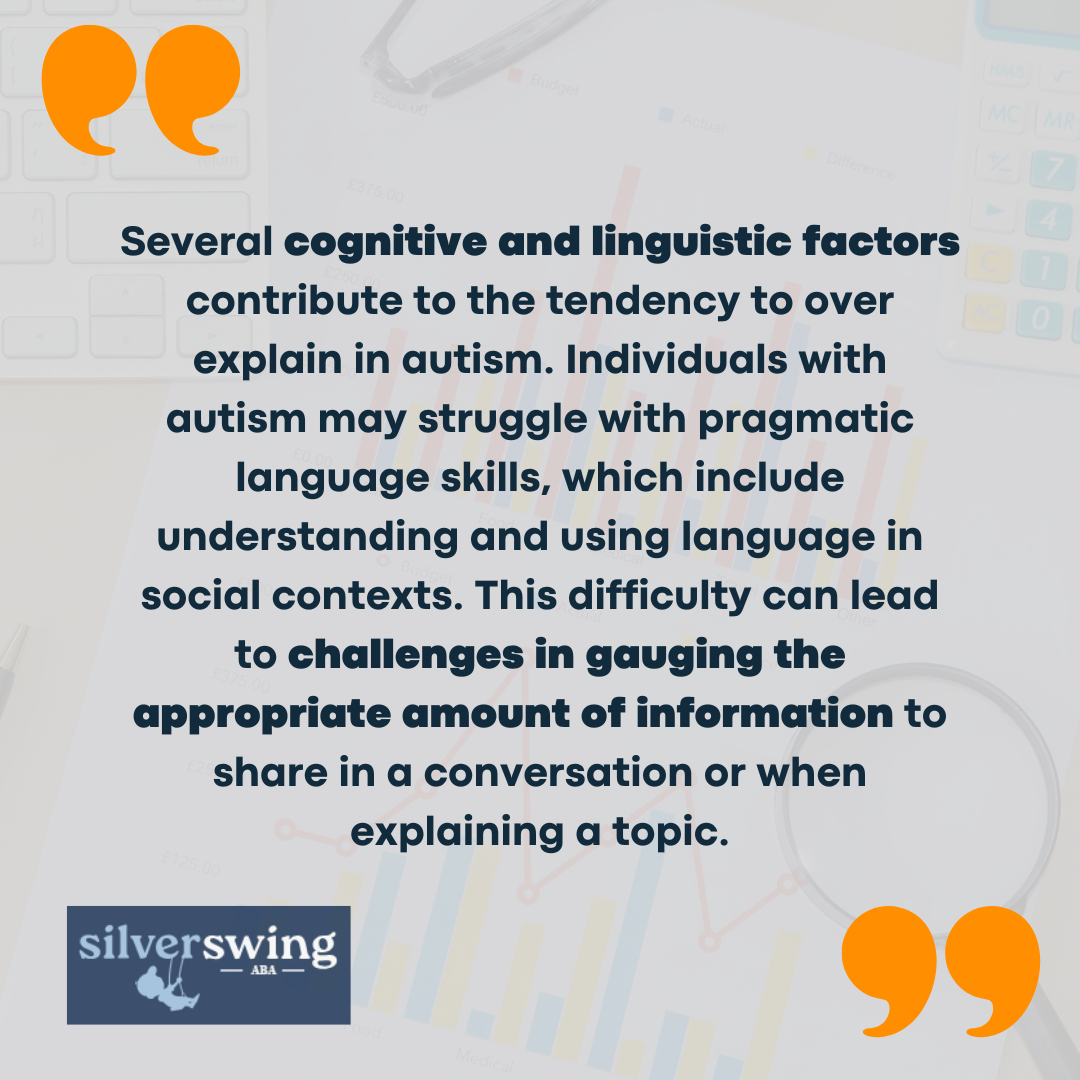Autism spectrum disorder (ASD) is characterized by a wide range of behaviors and challenges in social interaction, communication, and repetitive behaviors. One of the observed behaviors in individuals with autism is a tendency to over explain.
This phenomenon can manifest in various contexts and has implications for social interactions, education, and everyday life.

Understanding Over Explaining in Autism
Over explaining refers to the tendency of individuals with autism to provide excessive detail or information beyond what is typically necessary or expected in a given situation. This behavior can occur in both verbal and written communication and is often characterized by a focus on minute details or a thorough explanation of concepts that others may find straightforward.

Research has shown that individuals with autism often have a strong preference for concrete thinking and may struggle with abstract concepts or social nuances. This cognitive style can contribute to over explaining as individuals focus on providing precise, factual information rather than summarizing or using more concise language.
Social Implications
The tendency to over explain can impact social interactions in significant ways. In conversations, individuals with autism may monopolize discussions by providing extensive details or explanations, which can lead to challenges in reciprocal communication.
This behavior can sometimes be perceived as a lack of awareness of social cues or conversational turn-taking, which are important aspects of typical social interactions.
Studies have indicated that difficulties in social communication, including over explaining, can contribute to social isolation or misunderstandings in peer relationships. Peers may perceive individuals with autism as overly verbose or unable to engage in casual, reciprocal conversation, further complicating social interactions.

Educational and Professional Contexts
In educational settings, over explaining can affect learning and classroom dynamics. Teachers and educators may need to provide additional support to help individuals with autism develop more concise communication skills while still respecting their need for structure and clarity.
Strategies such as visual supports, explicit teaching of conversational rules, and peer-mediated interventions can be beneficial in promoting effective communication skills.
Similarly, in professional environments, individuals with autism may face challenges related to over explaining, especially in situations requiring concise presentations or interactions with colleagues and clients. Employers and coworkers can support individuals with autism by promoting clear communication guidelines and providing opportunities for skill development in effective communication strategies.
Neurological Basis
Neurological research suggests that differences in brain development and connectivity may contribute to the tendency to over explain in autism. Functional imaging studies have highlighted differences in neural circuits involved in language processing and social cognition, which can impact how individuals with autism perceive and respond to social communication cues.
Specifically, alterations in the connectivity of the frontal and temporal lobes, which are critical for language comprehension and social understanding, may influence the way individuals with autism process and generate language.
These neurological differences can contribute to the observed patterns of over explaining as individuals rely on detailed, concrete information processing strategies.

Interventions and Support Strategies
Effective interventions and support strategies can help individuals with autism develop more adaptive communication skills while respecting their unique cognitive and linguistic profiles. Speech-language therapy, social skills training, and cognitive behavioral interventions are commonly used approaches to address challenges related to over explaining and promote more effective communication strategies.
In educational settings, educators can implement structured communication supports, such as visual schedules or social stories, to help individuals with autism navigate social interactions and understand expected communication norms.
Peer-mediated interventions, where peers provide modeling and feedback on communication behaviors, can also be effective in promoting social engagement and reducing the tendency to over explain.
Over explaining is a recognized tendency in individuals with autism that can impact various aspects of daily life, including social interactions, education, and professional contexts. Understanding the cognitive, linguistic, and neurological factors underlying this behavior is essential for developing targeted interventions and support strategies that promote effective communication skills while respecting the individual strengths and challenges of people with autism.
Future research may further elucidate the specific mechanisms underlying over explaining in autism and explore additional intervention approaches to support individuals in navigating social communication challenges effectively.
By fostering a supportive environment that values clear communication and respects individual differences, we can enhance the quality of life and social participation for individuals with autism spectrum disorder.




